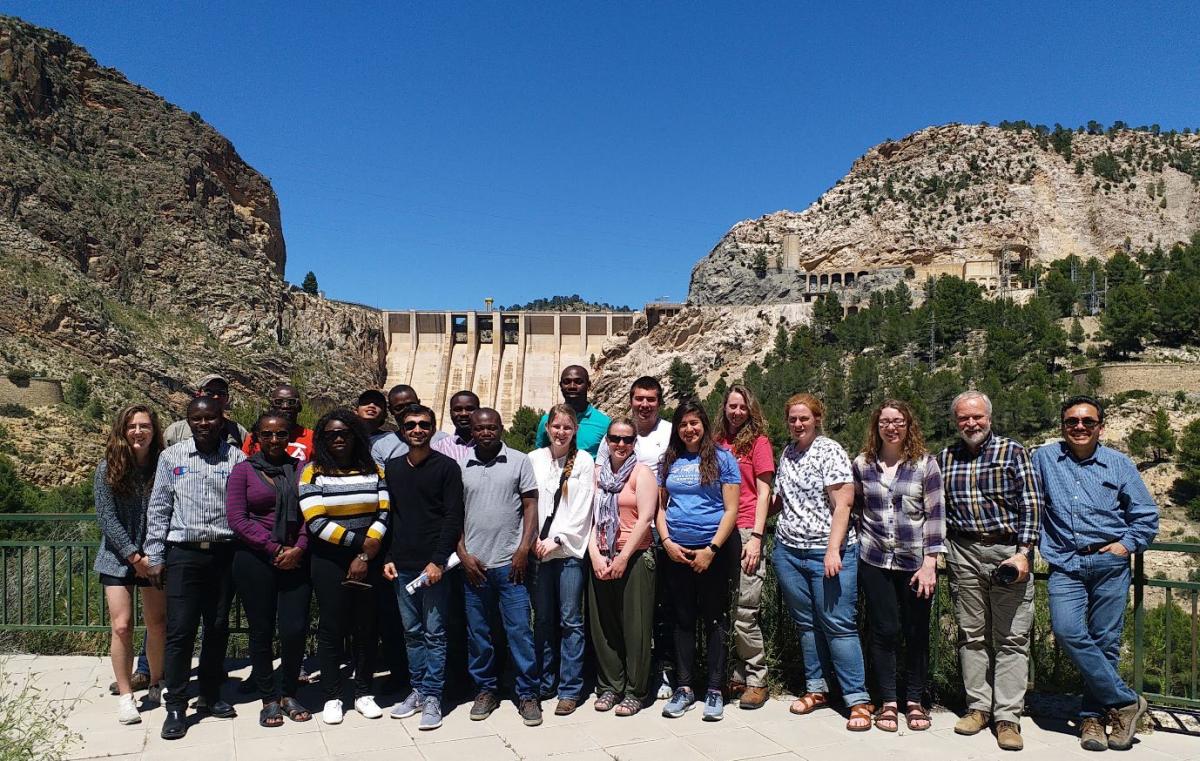
In a learning adventure of a lifetime, nine NRT students and Francisco Muñoz-Arriola, NRT hydrology professor, traveled to The Netherlands, France and Spain from May 16 to June 6, 2019, to compare ancient and modern water structures there with ones in Nebraska.
“An overarching theme of the trip was the constant struggle of equitably distributing water for different, and often competing, resources,” doctoral student Conor Barnes said.
The group began their European field trip at the IHE Delft Institute for Water Education in The Netherlands, where they received a few days of instruction and 10 students from Africa and Asia joined them.
“These international students were a great aid in helping us understand water infrastructure in Europe,” master’s student Alison Ludwig said. “Since that is their area of study, they know much more about it than I do as an ecologist, for example. They also explained differences and similarities between the water infrastructure we studied and that of their home countries.”
The complete group of 19 students and accompanying professors journeyed to France, where they met with leaders from the SupAgro institute and spent seven days visiting sites such as the Gignac Canal and the Pont du Gard bridge.
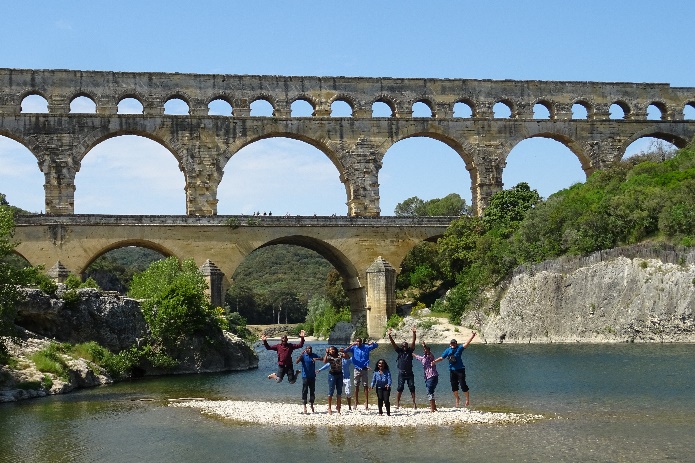
Students learned that Romans constructed the Pont du Gard bridge and water distribution system almost 2,000 years ago without the use of mortar or clamps. The bridge contains about 400 tons of limestone and runs 902 feet in length and 160 feet in height.
“We were greatly impressed by the precision of the Roman engineers using simple technologies to maintain a gradual drop and a difference in height of only 17 meters over the bridge’s length,” master’s student Julie Fowler said. “The use of gradient or gravitational flow avoided the expensive use of pumping.”
Students viewed the ancient basin at the end of the aqueduct, the Castellum Divisorium de Nîmes. Ten holes still visible in the masonry show where pipes once directed the water to various parts of the city. The only other Roman castellum divisorium better preserved is at Pompeii.
“The Pont du Gard aqueduct system remains an artistic masterpiece showing human genius and cultural tradition,” Fowler said. “We were left amazed by such innovation in hydraulic engineering.”
In the afternoon, small groups visited the Maison Carrée temple and the Arena of Nimes, also built by the Romans nearly 2,000 years ago.
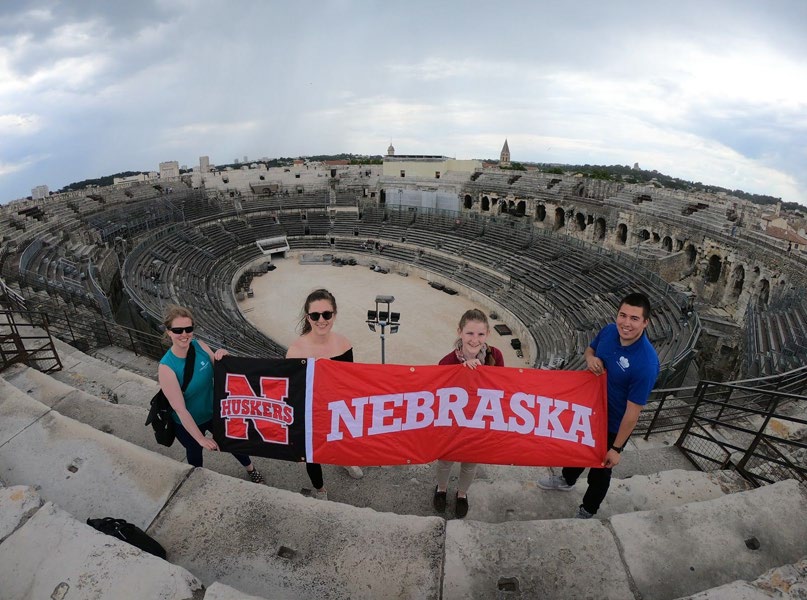
The entire group also viewed a modern wastewater treatment facility and irrigation projects in France.
“Overall, the wastewater treatment facility provided interesting insight into how people might reuse wastewater more efficiently and effectively,” Barnes said. “We were surprised to learn that 90 percent of wastewater currently used in the world is in an untreated state and, therefore, unavailable for more water-efficient methods such as drip irrigation systems. Many of the effects of wastewater—both untreated and membrane-treated—on plant and soil health remain unknown.”
The group then toured Spain seven days, visiting the Tancat de Milía reconstructed wetland, boating through the Albufera National Park, and viewing the Alarcon and Contreras dams, among other sites.
“If I had to pick my favorite of the sites we visited, it would probably be our visit to Albufera and the boat ride,” Ludwig said. “We got to see a lot of cool wildlife and learn a lot about how they are managing the water resource, although I really enjoyed the Water Tribunal too.”
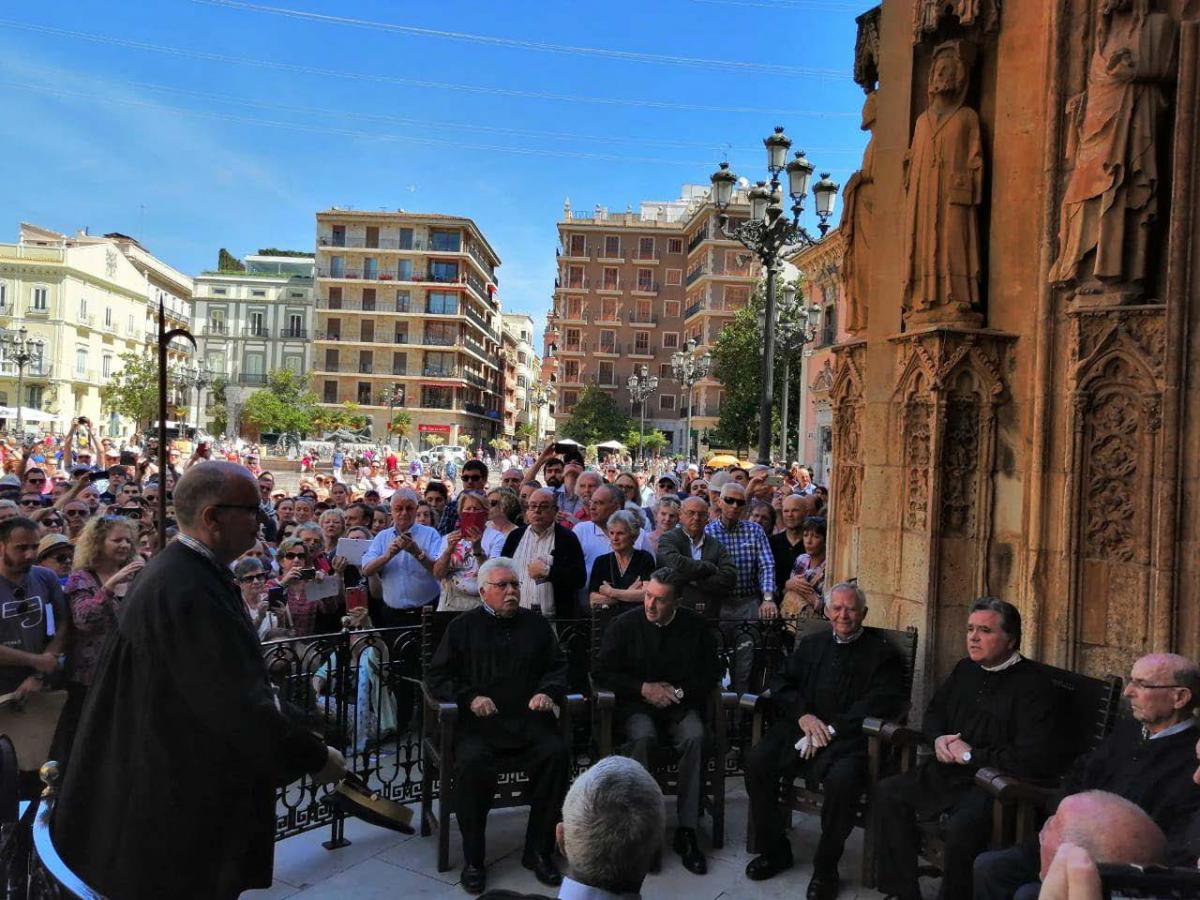
The Water Tribunal in Valencia is a 1,000-year-old tradition recognized by UNESCO since 2009 as an intangible cultural heritage. The members of the tribunal are all male farmers elected every two years to represent a canal in the Turia River irrigation system and the lands irrigated by it. The tribunal meets every Thursday at noon on the steps of the Cathedral of Valencia to resolve any disputes by hearing cases and rendering judgments not subject to appeal. Tribunal members wear traditional garb of the region and speak in Valencian.
“The tribunal did not have a case the day we visited,” Ludwig said. “That is actually the norm. They said it was rare for there to be disagreements between water users that couldn't be settled out of court.”
Students spent their last day in Spain in Valencia and, not totally homesick yet, decided to sample more of the region’s cuisine. Doctoral student Lyndsie Wszola ordered paella, a rice dish with various meats, vegetables and spices mixed in.
“The paella was great,” Wszola said. “I ordered it because I was curious and wanted something with seafood in it.”
When it arrived at her table, its color surprised her.
“I didn't know that it would be that red,” she said.
Red, indeed! Red enough to earn a new name for itself.
According to this group of Huskers, Spain is now proudly serving “Big Red paella.”
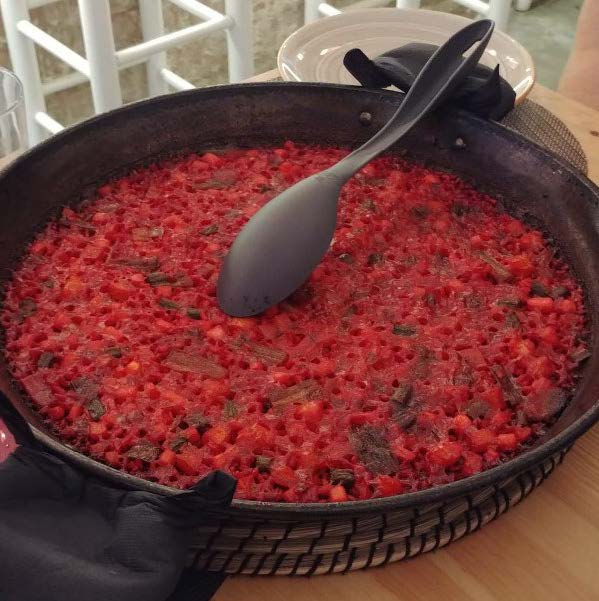
— Ronica Stromberg, National Research Traineeship Program Coordinator


